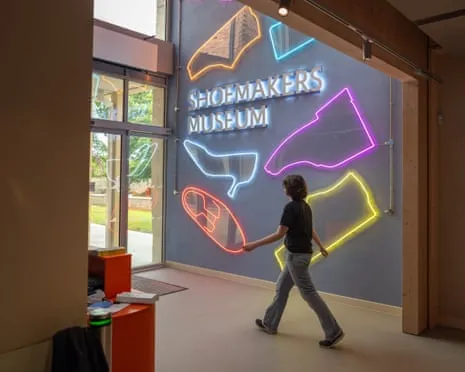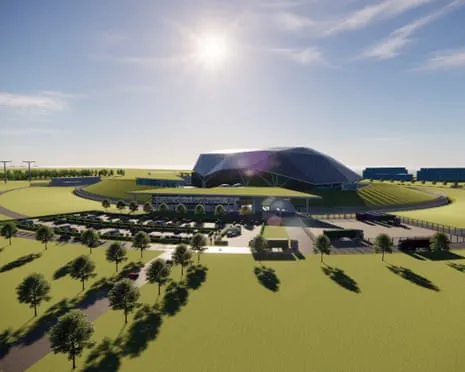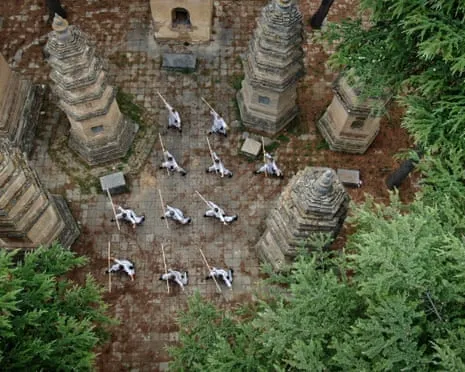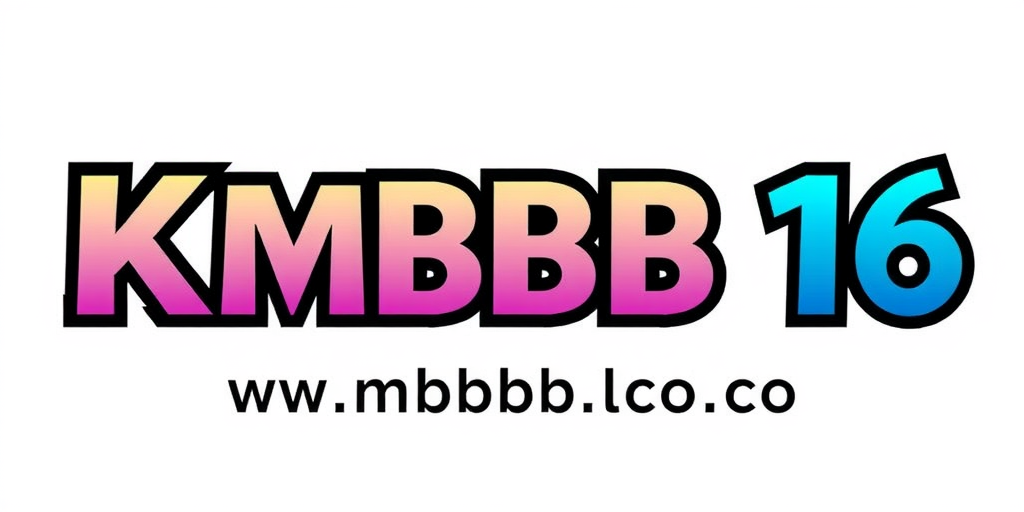Latest
Update

News
The Iconic Shoemaker Unveils a Heritage Center to Celebrate Two Hundred Years of History

Krystal Harper
18 Sep 2025

News
Black Rabbit Critique: A Grim Drama Which Fails to Make Audiences Care
By Krystal Harper
• 18 Sep 2025

News
Why America Faces a Perilous Juncture Following the Conservative Activist Assassination
By Krystal Harper
• 18 Sep 2025
Featured Story

News
Sex Abuse Allegations Targeting Leading Down Under Broadcaster Downgraded

Krystal Harper
18 Sep 2025
Today's Top Highlights


Could the Stars At Last Coming Together for a ‘Renewed Era’ of Nuclear Energy?
 By Krystal Harper
•
18 Sep 2025
By Krystal Harper
•
18 Sep 2025

US Immigration Judge Orders Deportation of Pro-Palestinian Leader Due to Misrepresented Information on Green Card Form
 By Krystal Harper
•
18 Sep 2025
By Krystal Harper
•
18 Sep 2025

Paris Should Have Acknowledged Palestine as a State Long Before: The Cynic Asks: What Prompted This Move?
 By Krystal Harper
•
18 Sep 2025
By Krystal Harper
•
18 Sep 2025

What Exactly Would Jimmy Kimmel State Regarding Charlie Kirk’s Killing?
 By Krystal Harper
•
18 Sep 2025
By Krystal Harper
•
18 Sep 2025

‘It Was a Bad Dream – But I Never Woke Up’: What It’s Like Saying Goodbye to Your Closest Companion.
 By Krystal Harper
•
18 Sep 2025
By Krystal Harper
•
18 Sep 2025


The nation Preparing for Major Strike Action Amid Deepening Governmental Crisis
 By Krystal Harper
•
18 Sep 2025
By Krystal Harper
•
18 Sep 2025

Remains Found in Car Registered to Artist D4vd Identified as Disappeared Teen
 By Krystal Harper
•
18 Sep 2025
By Krystal Harper
•
18 Sep 2025

High-profile Church Leader Denies Gift-giving Claims Involving Ex-South Korea President's Wife
 By Krystal Harper
•
18 Sep 2025
By Krystal Harper
•
18 Sep 2025

Families of the Air India accident victims sue aerospace companies Honeywell and Boeing
 By Krystal Harper
•
18 Sep 2025
By Krystal Harper
•
18 Sep 2025

September 2025 Blog Roll
- 789BET
- 789BET
- MM88
- 5MB
- https://mm88.agency/
- mm88
- new88blog.org
- https://23win.finance/
- daduemas88 link
- buntogel
- UFA656
- https://mm88.it.com/
- https://ku88.click/
- https://fm88.cash/
- https://da88.co.im/
- https://9bet.bike/
- https://vb88.bz/
- PH222
- https://kkwin.diy/
- okfun
- VMAX
- trang chủ u888
- Kubet
- slot
- sunwin
- sunwin
- online casinos
- SODO66
- 66 Club
- 789P BET
- NOHU90
- HZ88 BET
- HM88 BET
- AF88 BET
- 888NEW BET
- EU9 BET
- 89BET CASINO
- 68WIN BET
- https://Go99.is
- https://tv8889.net
- https://nohu90s.ink
- https://xn8800.com
- https://Go892.com
- https://go99.ca
- LODE88
- LU88
- NBET
- MAX88
- UK88
- xo88
- tx88
- https://heylink.me/mega888game/
- okwin
- 5mb
- EV88
- lode88
- https://789f.fan/
- best meme coins
- Nhà cái uy tín
- ku bet
- soi kèo bóng đá
- non gamstop casinos
- Top 10 casino's zonder CRUKS
- meilleur casino en ligne France
- nohu
- 79sodo
- gamstop
- online casino
- LC88
- GEM88
- Fb88
- w88
- w88
- situs toto
- https://32winz.com/
- MM88
- DU88
- https://5mb.icu/
- https://5mb.gg/
- https://5mb.io/
- https://5mb.es/
- casino online deutschland
- https://5mb.onl/
- https://78winni.net/
- loto188.fyi
- online slots
- iwin
- rikvip
- rikvip
- bk8
- bk8
- 8xbet
- gem88
- gem88
- oxbet.cafe
- https://32winz.org
- best online slots
- https://wwqq88.com/
- LUCK8
- kkwin
- Kuwin
- https://agenzona66.com/
- okwin
- tip88
- 9bet
- alo789
- km88
- https://kkwin.co.com/
- okwin
- SODO66
- best canadian online casino
- canada online casinos
- top online casinos in Canada
- best online casinos canada
- canadian online casinos
- TG88
- go8
- vuabet88
- E2BET
- E2BET
- E2BET
- canadian online casino
- New88
- New88
- https://q789win.vip/
- https://hm88.actor/
- https://88aa.golf/
- Sunwin
- https://gk88t2.com/
- https://fsbet.net/
- tx88
- da88
- lucky88
- SKY88
- luongsontv
- https://zona66.cam/
- Leo88
- casinos online
- https://luongsontv2.com/
- luongsontv
- xlbola login
- lương sơn tv
- luongsontv
- SODO66
- Top casinos
- ai88
- SODO
- RR88
- SODO
- LT88
- miso88
- 789win
- https://58win.watch/
- สล็อต168
- v9bet
- slot88 resmi
- Trang game giải trí
- 789F
- 789WIN
- 88bet
- dunia777
- slot gacor
- fun88
- 8KBet
- KUBET
- best sports betting sites
- dm win
- Toto Togel
- bola88 login
- mibet
- kangtoto
- jayaslot
- slot online terbesar
- https://23win.cab/
- http://88clblw.com/
August 2025 Blog Roll
- zenostogel
- Situs Slot
- RR88
- https://68xbet.net/
- BET88
- Citizenship-by-investment.net
- Kubet
- okwin
- văn khánh tv
- https://rr88.build/
- hi88
- mbak4d
- nohu90
- https://pg88vn.lat/
- bet88
- gk88
- slot gacor
- pg99
- gk88
- kutu4d
- MM88
- nhà cái kuwin
- Miso88
- 789club
- king88
- onbet
- 79king
- dinasti555
- bet88
- Situs togel
- bet88
- Nhà cái Tx88
- 69vnk6ai.com
- 9bet
- kí tự đặc biệt
- uus777
- 23win
- สล็อต168
- lxtoto
- kuwin
- nohu
- MM88
- kubet11
- poker88
- gk88 đăng nhập
- vin88
- ww 88
- 13WIN
- https://kubet77.onl/
- MM88
- https://ax88.store/
- daman app
- indo gg
- luongsontv
- uu88
- GGWIN
- OK9
- link sigapbet
- E2BET
- xx88
- Kubet
- 23win
- papatogel register
- https://68winss.com/
- TIP88
- 88BET
- F168
- okwin
- XX88
- demo slot
- ปั้มยอดวิ
- Kubet
- casino en ligne France
- https://www.hj88-casino.com/
- i9bet
- xocdia88
- DEDITOTO
- 99ok
- https://xx88.art/
- miso88
- ufa289
- 33Win
- arena tempur slot
- hm88
- Bk8
- eslot
- https://www.addictologie.org/
- SV368
- u888
- สล็อตเว็บตรง
- bay789
- saobet
- XX88
- api66 slot
- uu88
- https://mm88.io/
- Fb88
- S666
- 搜狗输入法下载
- 789P
- hi88
- MM88
- kangjitu
- kèo nhà cái
- bandar slot online
- TG88
- xin88
- uu88
- link Aloha4d
- 789p
- kointoto
- https://58win79.com/
- https://33wincom.org/
- 789bet đăng nhập
- bet88
- pg88
- 33win
- xo88
- xoso66
- bandar togel
- https://xx88.xyz/
- LUCK8
- doyan5
- https://vnae2bet.games/
- s1288poker
- rupiahtoto
- UAE Casino Sites
- BET88
- KJC
- u888
- https://kreativekustoms.net/
- magnumtogel
- best sports betting sites singapore
- 8XBET
- king88
- https://sv3688.live/
- 78win
- MM88
- ai88bet
- https://kjc.website/
- dentoto
- τα καλυτερα ξενα online casino
- KJC
- zbahis
- MM88
- Read more
- SV368
- KUWIN
- QQ88
- https://king88.international/
- Ligahokie22
- https://9ae888.com/
- mustikaslot
- u888
- NO HU
- game GK88
- Thabet
- 69vn
- OK9
- 32WIN
- Slot Gacor
- QQ88
- 99win
- mbak4d
- slot gacor
- KKWIN
- slot
- lode88
- https://mm88.space/
- panutantoto daftar
- j88
- kuwin
- slot gacor
- đăng nhập m88
- https://mm88.tech/
- Debet
- online kazina
- Toronto tech scene
- TK88
- 98WIN
- mm88
- win55
- 789win
- KING88
- koinvegas daftar
- whatsapp网页版
- link mitosbola
- alo789
- kutu4d
- bong88
- QQ88
- casino utan spelpaus
- https://nftp.muet.edu.pk/
- rr88
- xx88 casino
- f8bet
- https://king88.giving/
- doyan5
- nhà cái 32win
- OK9
- SV368
- https://bet88vn.in/
- https://xo88casinox.com/
- https://789wint2.com/
- Link Slotbom77
- OK9
- XX88
- F168VIP
- MM88
- https://www.emprendeimperio.com/
- rr88
- okwin
- 789bet
- VankhanhTV
- 32win
- slotsgg
- F168
- SV368
- ABC8
- Online Casino België
- https://okwin.study/
- u888
- pg88 trang chủ
- 69vn
- 23win
- AZ888
- ALO789
- https://e-aula.anestesiar.org/
- Bkkwin
- teratai888
- Keo nha Cai
- BK8
- ALO789
- xx88.aisa
- ai meta hack
- FB88
- xoso66
- 78WIN
- 79king
- saldowd
- mmoo
- King88
- dewacash login
- sunwin
- 32win
- XX88
- okking
- TK88
- https://32winse.com/
- Ok365
- 13win
- kingbet188
- toto macau 4d
- w88
- mdgwin
- nhà cái uy tín
- Nhà Cái Uy Tín
- mahkota555
- dewahub
- u888
- OKWINTV
- 33win
- BET88
- hamtoto
- ww88
- pg99
- casino en ligne France légal
- ww88
- Hi88com
- slot
- xx88
- Nhà cái uy tín
- UU88
- 강남 가라오케
- upinslot
- u888
- Kuwin
- best online casinos canada
- kubet
- i9bet
- https://xx88.us.com/
- klikfifa
- 카지노코리아
- hi88o
- trực tiếp đá gà thomo
- 188bet
- Gofun娛樂城
- f8bet
- betvnd
- luongsontv
- Tỷ lệ kèo
- https://32win.dev/
- bet88
- https://linklist.bio/goltogel
- Nohu90
- kubet
- Sawer4d
- casino utan spelpaus
- tx88
- OK9
- U888
- 789betviet com
- https://www.xx88.church/
- jun88
- slot88
- casino utan spelpaus
- slot gacor
- 32win
- romabet giriş
- KUBET
- https://32win.golf/
- 69VN
- https://nohu.br.com/
- สล็อต168
- nhà cái uy tín
- td88
- J88
- jkbet88
- kubet pizza
- SHBET
- Slot 5000
- https://km88.monster/
- hi88
- mainaku
- https://33win.bingo/
- J88
- 89bet
- ufabet
- go8
- ok9
- F8BET
- ufabet เว็บตรง
- 6FF
- aq999win
- xổ số shbet
- link Shbet
- Kubet
- https://8day11.ink/
- hi88g
- ebikes
- best instant withdrawal crypto casino
- uu88
- sadewa77
- 58WIN
- aslotre
- candu123
- slot gacor
- https://vnd77-viet.com/
- OKWIN
- api88 slot
- BET88
- PG SLOT
- 9bet
- 18win
- mm88
- 789win
- https://8kbets.best/
- https://pg88vn.my/
- https://qq88z.net/
- luongsontv
- https://five88.monster/
- xx 88
- W88
- https://u8888one.baby/
- Truyenqq
- kèo nhà cái
- bj88
- v9bet
- 8DAY
- MU88
- da88
- kuwin
- PG99
- 79king
- ww88
- Jajantogel
- 789win
- https://dola789.events/
- five88
- australian online casinos
- Hello88
- 100vip
- J88
- ae888
- 먹튀폴리스
- du88
- U888
- J88
- dewascore
July 2025 Blog Roll
- slot online
- wps官网
- 69vn
- XX88
- Lu88
- u888
- slot okesultan
- du88
- https://33win.clothing/
- 79king
- telegram 下载
- japritoto login alternatif
- domtoto
- สล็อต 789
- แทงหวยออนไลน์
- 58win
- https://sossoftware.co.uk/
- Operabola
- GA888
- 77WIN
- abc8
- 88CLB
- https://oxbet.channel/
- over under parlay
- https:vip52.io/
- SLOT GACOR
- https://shbet63.com/
- mpo777
- kèo nhà cái
- rr88
- https://789win.market/
- Kubet
- https://fb88.nexus/
- https://www.thecitycentre.london/
- dbltoto
- 88clb
- skor88
- Nhà cái Ae888
- lapak303 link alternatif
- VMAX
- 58WIN
- https://f8bet-vn.com/
- kèo nhà cái
- https://k8cc.energy/
- trang chủ qq88
- BIG88
- https://take2bet.com/
- XX88
- 789win
- ABC8
- Nohu
- 123win
- uu888
- https://sunwinners.com/
- 23bet
- j88
- dominobet
- TD88
- HI88
- mantap 555
- hb88
- GK88
- DU88
- totobet 805
- 789bet
- 79KING
- ALO789
- 23WIN
- ok365
- ufabet
- https://28betjp.com/
- สล็อต888
- jagoanspin
- https://88clbbb.com/
- rsg試玩
- SV88
- https://789win1.live/
- cemeslot
- 8kbet
- slot gacor
- MB66
- QQ88
- dewabet
- Bandar Togel
- vsbet
- 69VN
- 86bet
- 789win
- V9bet
- 7meter
- 32win
- UFANANCE
- https://shbet45.com/
- 58win
- dwvgaming
- https://23winvn.co/
- Bet88
- Kubet
- best VPN casino
- 68gamebai
- https://8kbeta.com/
- binjaitoto
- platform perdagangan kripto
- https://33winf.fun/
- pengeluaran macau
- B52 CLUB
- DA88
- BET88
- sabung ayam online
- Bet88
- สล็อตเว็บตรง
- https://mm88.build/
- gudangbet88
- gacor88
- rantau4d
- 69VN
- https://k8cc.uno/
- สล็อต
- เว็บพนันออนไลน์
- TX88
- ngân hàng nông thôn
- แทงหวย
- link tigerasia88
- cpc2888
- abc8
- XX88
- 58WIN
- U888
- j88
- online casino uden rofus
- QQ88 COM
- hi88
- slot
- slot gacor 777
- slot gacor
- beste online casino zonder cruks
- สล็อตแตกง่าย
- Cwin
- bigdewa
- TD88
- 789win
- https://nohu.locker/
- 블랙툰
- tdtc
- OK365
- doyan5
- หวยออนไลน์
- 33win
- 9BET
- New88
- slot777
- bj88
- uus777
- betclub89
- ok9
- SITUSWIN
- link Aloha4d
- ww88
- https://23wincom.tv/
- XX88
- King88
- 188BET
- Tototogel
- dinasti555
- 789p
- slot online
- onward Ticket
- diuwin game
- uu88
- https://www.adswindentoto.com/
- ww88
- https://bet68gamebai.com/
- オンラインカジノ おすすめの紹介
- สล็อตเว็บตรง
- rusia777 link
- สล็อต 99
- gacorbet88
- situs slot gacor 2025
- slot scatter hitam
- 8kbet
- Lucky88
- luongsontv
- slot demo pragmatic
- Kubet
- bongx9.autos
- 789WIN
- https://bet88vn.london
- https://pg88vn.tokyo/
- https://bet88zb.com/
- Slot
- Demo Slot
- https://sip777.it.com/
- operabola
- OKKING
- 88vv
- da88
- Bo Togel
- shbet
- XX88
- penjualan senjata tajam
June 2025 Blog Roll
- rr88
- slot server jepang
- UU88
- fb88
- https://qq888.dev/
- BONG88
- 8kbet
- Jun88
- https://lucky8888.pro/
- slot gacor
- u888
- บาคาร่า
- BJ88
- E2BET
- slot gacor
- parisumut.org
- m88 login
- deluna188
- 9bet
- 13win
- layaktoto
- kuwin
- may88
- J88
- U888
- QQ88
- xin88
- LODE88
- LUCK8
- situs toto
- OK9
- https://789winok.com/
- abc8
- kentucky derby sportsbooks
- https://98win.media/
- 11bet
- Nohunet.com
- toto slot
- HB88
- 7m
- https://j88play.com/
- QQ88
- situs slot gacor
- slot
- https://vipwinzz.com/
- slot gacor
- u888
- kuwin
- w69
- airasiabet
- 33winn.center
- Rupiahtoto
- wingslots77
- Bet88
- AMARTOTO
- 23win
- uu88
- hesgoal tv
- Slot88
- bandar togel
- mega888.com.co
- cpc2888
- da88
- E2BET
- lucky88
- สล็อต
- u888
- 9bet
- Udangbet
- lucky88
- situs slot gacor
- kuwin
- kingjr99
- Truyenqq
- Katsu5
- QQ88
- lsm99
- deneme bonusu veren siteler
- sitoto daftar
- Ufabet
- https://69vn.schule/
- 69VN
- slot777
- SITUSWIN
- I9BET
- mpo slot
- creditcard casino
- 69VN
- ufabet เว็บหลัก
- nhà cái bk8
- QQ88
- New88
- remipoker daftar
- 69vn
- 69vn
- bitcoin casino Sverige
- https://79kingg.me/
- RR88
- lương sơn tv
- bet88
- 9bet
- bet88
- areaslots
- XX88
- nổ hũ
- bong88
- bet88 com
- https://ax88xx.com/
- SV388
- https://k8cc.faith/
- 33WIN
- cipung138
- mahkota555
- 58WIN
- 13win
- 32win
- https://bancadoithuong.moe/
- BJ88
- pg88
- https://j88.ventures/
- https://keonhacaitv.net
- ok365
- 789P
- toto slot
- https://nhacaiuytin.tips/
- kartupoker
- hb88
- best casino apps
- SV 388
- bet88
- MB66
- casino en ligne France avec argent réel
- batik55
- totobet805
- randm tornado
- 99OK
- 789win
- SLOT888
- https://t8kbet5.com/
- link Aloha4d
- slot gacor
- สล็อต
- kubet88
- pg99
- Demo Slot PG
- SBOTOP
- Kubet
- 플러스카지노 도메인
- ww88
- 555win
- SLOT QRIS
- km88
- Thabet
- BJ88
- 23win
- qh88
- QQ88
- lucky88
- Neng4d
- nyalabet
- RR88
- https://pg99bz.com/
- situs togel
- nhà cái uy tín
- GA179
- สล็อต666
- Hi 88
- https://nhacaifo88.com/
- Nhà cái uy tín
- 8live
- 8XX
- 33win
- naga508
- slot88
- situs togel
- hi88
- one88
- Hit77
- Bet365
- cwin
- KUBET
- non gamstop casinos
- non gamstop casino
- e2bet-games.com
- offshore casinos
- QQ88
- slot gacor
- golbos
- trang chủ qq88
- สล็อตเว็บตรง
- garuda303
- mitra super scatter
- inatogel
- suncity
- สล็อตเว็บตรง
- BET88
- Fun88
Recent Posts




Sponsored News
 News
News
Former TV Host Alan Jones Enters Not Guilty to Twenty-seven Charges
 By Krystal Harper
•
18 Sep 2025
By Krystal Harper
•
18 Sep 2025
 News
News
China's Monastic Commerce Under Examination as Scandals Rock Influential Religious Leaders
 By Krystal Harper
•
18 Sep 2025
By Krystal Harper
•
18 Sep 2025
 News
News
Europe-Funded Arms Shipments Begin Under ‘Purl’ Programme
 By Krystal Harper
•
18 Sep 2025
By Krystal Harper
•
18 Sep 2025
 News
News
Matchroom chairman Hearn Threatens Lawsuits Against Chris Eubank Jr Over ‘Sabotage’ Claims
 By Krystal Harper
•
18 Sep 2025
By Krystal Harper
•
18 Sep 2025
 News
News
Australia's Broadcaster Barred from Trump's UK Press Conference Following Journalist Clash
 By Krystal Harper
•
18 Sep 2025
By Krystal Harper
•
18 Sep 2025
 News
News
Israeli Officials Threatens Ophir Awards After Palestinian Story Wins Best Picture
 By Krystal Harper
•
18 Sep 2025
By Krystal Harper
•
18 Sep 2025
